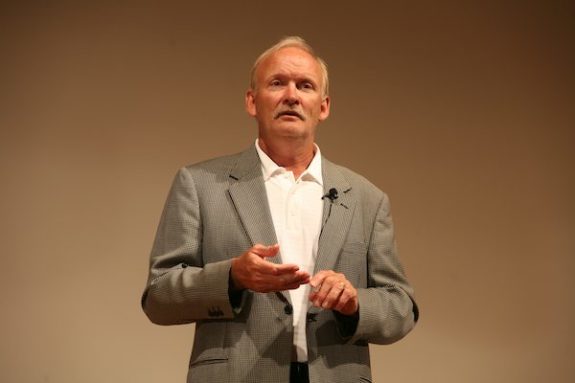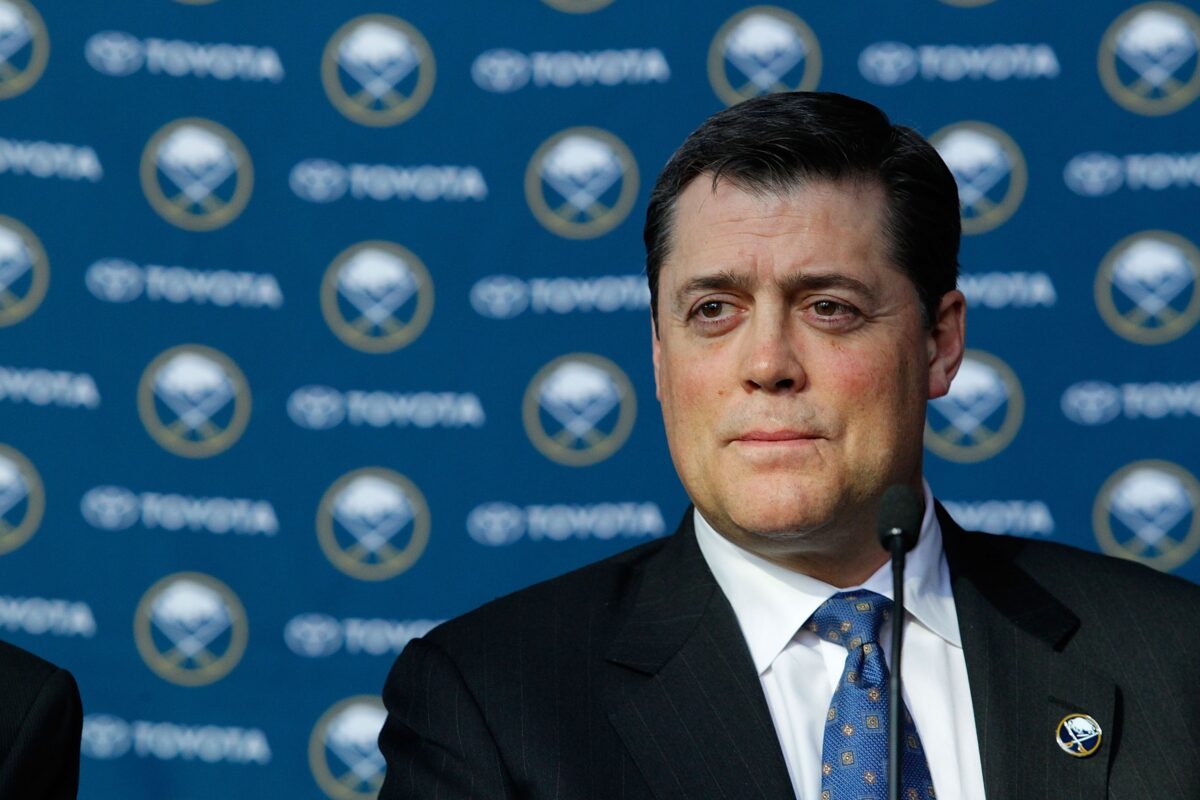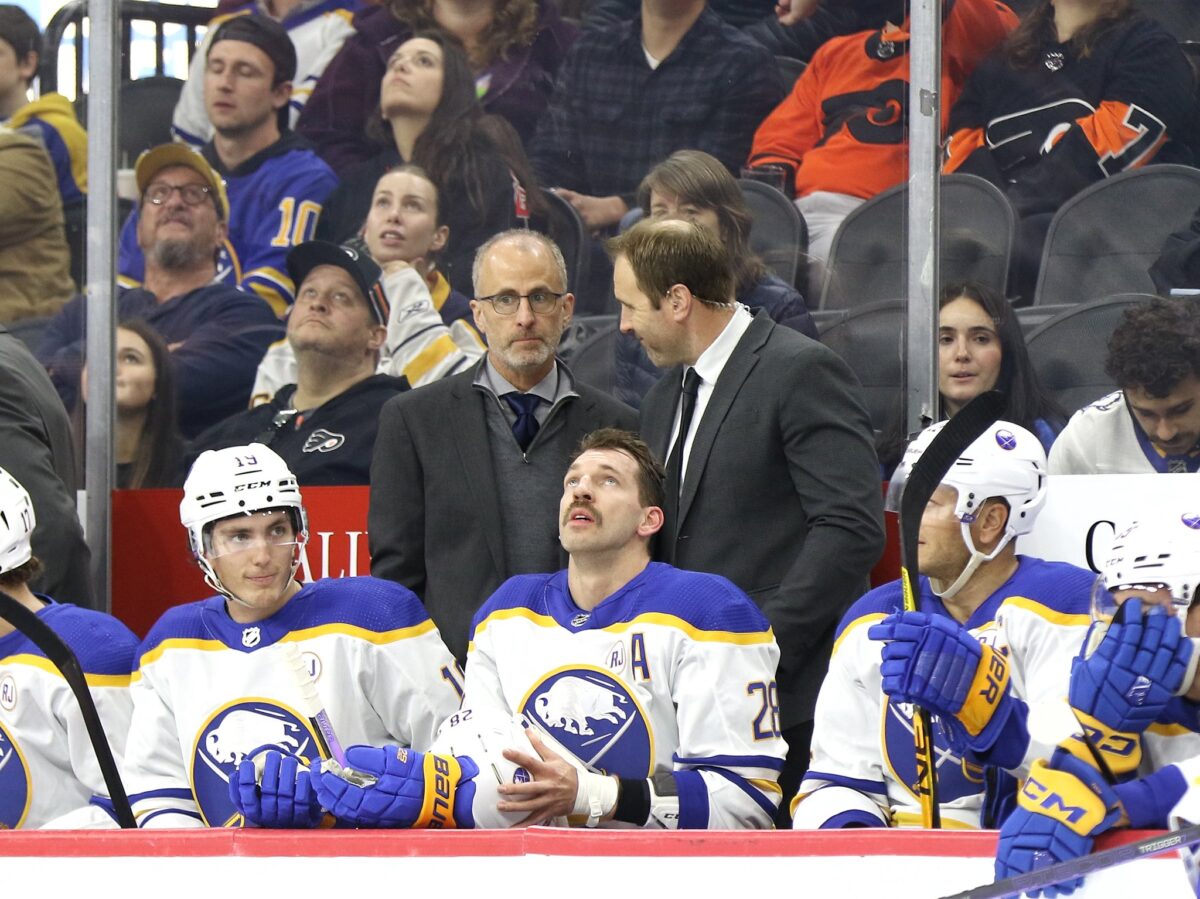It has officially been 10 years since one of the toughest days in the history of the Buffalo Sabres. On Feb. 28, 2014, the Ryan Miller era came to a sad end in Buffalo when the Sabres traded him to the St. Louis Blues.
The move was dubious enough to begin with, and its legacy has only worsened with age for a number of reasons. Miller had been the last remaining vestige of the team’s former glory days, and parting ways with the stalwart backstop ushered in a stretch of mediocrity that’s difficult to describe in words. But how did that happen?
Things were already going poorly for the Sabres at the time, but pulling the trigger on the ill-fated transaction accelerated the decline and proved to be the first in a wave of bad decisions that transformed the franchise into the laughing stock of the NHL. Let’s jump back in time to the not-too-distant past and examine why trading Ryan Miller snowballed and set the Sabres on a course of futility that led to the NHL’s longest-ever playoff drought.
The Beginning of the End
The Sabres’ journey to the bottom of the NHL was already well underway by the time Miller was on the trade block. In 2013, it became clear that the franchise was stalling, and change came when longtime head coach Lindy Ruff and general manager (GM) Darcy Regier were dismissed in February and November, respectively. Then-Ottawa Senators assistant general manager Tim Murray succeeded Regier in January 2014, while Ruff’s firing was the first of six in the following seven years.

Despite the shakeups, the Sabres continued to plummet, and as the 2013-14 campaign became a free-fall, a subplot emerged. Miller was at the end of his contract and became the subject of rampant trade speculation. Would Buffalo ship out its franchise cornerstone and look towards the future, or would he be re-signed in an attempt to right the ship?
Fans seemed truly divided, and both outcomes appeared equally realistic. Some argued that a trade was necessary to bring new life into a franchise that had gone stagnant, while others insisted that keeping Miller was the only way to stop the train from becoming fully derailed. It was speculated that an answer wouldn’t come until the date of the March 5, 2014, trade deadline. But as it turned out, we didn’t have to wait until the 11th hour.
Trading A Sabres’ Icon
On Friday, Feb. 28, five days ahead of the deadline, the Sabres shocked the hockey world by sending Miller and captain Steve Ott to St. Louis. It was clear evidence that Buffalo was shifting into full-on rebuilding mode, and quite the package came in return. The Sabres received St. Louis’ 2015 first-round pick, 2016 third-round pick, star goaltender Jaroslav Halak, former first-round pick Chris Stewart and prospect William Carrier.

However, no amount of first-round picks or big-name players was going to change that it was a sad, sad day in Buffalo. Miller fought back tears in his farewell press conference, and it was easy to see why. The Michigan native’s time with the Sabres saw him develop from a fifth-round selection to a bona fide star and one of the best goaltenders in the NHL. He also forever endeared himself to Western New York through countless acts of charity, and the Sabres would go on to retire his No. 30 in 2023.
As painful as showing their standard bearer the door was, it all would have been worth it had the assets received in return been used to reinvent the Sabres. But, as we all know by now, the opposite occurred, and the trade opened the door for a prolonged organizational landslide, both on and off the ice.
LaFontaine’s Unceremonious Departure
Trading Miller brought with it a number of unintended consequences, the first of which didn’t take long to emerge. The prospect of the trade was polarizing to fans, but apparently, it was for the organization as well. After it was completed, the Sabres lost another big name, but nobody saw this one coming.
In the time between Regier’s firing and Murray’s hiring, Sabres legend and number retiree Pat LaFontaine returned and was named President of Hockey Operations. It was a welcomed site for fans, and it gave hope that things could turn around with a familiar face running the show. But all of that changed when Murray was named the new general manager.
The day after Miller was traded, LaFontaine voluntarily resigned his post, and it wasn’t a coincidence. It was later confirmed that relations between the Hall of Famer and the rookie GM were never as good as they seemed, and the two had taken opposite sides on the Miller debate. Murray favored trading the netminder, while LaFontaine wanted to give him a contract extension.

It’s tough to understate the irony of the situation. Less than two months after LaFontaine had secured Murray’s job (a move that Sports Illustrated heralded as “genius”), the beloved former captain was gone by his own volition, and he repeatedly dodged the many questions as to why, leading to all sorts of speculation. Some theorized that he had actually been fired and was trying to save face, while others wondered if he had resigned because Murray had undermined his authority (from “LaFontaine breaks silence but refuses to speak about exit,” The Buffalo News, 3/9/14).
The exact reason was never revealed, but knowing what we know now, he was smart to do so. The Sabres’ front office was left in ruins by LaFontaine’s abrupt exit, and things would only get worse. There’s no telling if things would have gone any better had he stuck around, but judging on how it went, it’s a safe assumption.
Murray’s Reign of Terror
Once again, it’s important to remember that we’re saying all of this with the full benefit of hindsight. But it would still be tough to not call Tim Murray the worst general manager in Sabres history, even by the most generous of evaluations. His three years at the helm saw some of the most disastrous transactions in franchise history, and it’s a wonder that he lasted as long as he did.
In hindsight, nobody can blame LaFontaine for not wanting to be responsible for Murray, whose surly personality and “my way or the highway” style led to difficult relations with just about everyone, both inside and outside the Sabres organization. But a consequence of his departure was that he essentially handed the keys to his subordinate, with nobody above him to keep him in check.
Murray pushed forward with his rebuilding vision and sold off a number of other players to stack up assets. The trend continued the following season to the extent that the media began accusing the Sabres organization of deliberately losing. He repeatedly denied the allegations, but it’s safe to say that nobody believed him. Thanks to the many moves, the Sabres acquired three first-round selections in the 2015 draft, which happened to feature one of the best talent pools in NHL history.
However, a traditional two to three-year rebuild was never Murray’s intention. Instead of using those three picks and the host of others at his disposal to grow the next generation of Sabres, he went in a different direction. Before and up to the draft, the Sabres traded away nearly all those assets to bring back marquee names and turn the team into an immediate contender, which would have been perfectly fine (if it had worked).
Instead, the trades had the opposite effect. To Murray’s credit, he brought in several talented young players, including Ryan O’Reilly, Evander Kane and Jack Eichel. But there were issues, the first being that the trades were far too lopsided against Buffalo, to a point that is almost comical in retrospect. In addition to giving up major draft picks, most of the deals included numerous other big-name players and prospects. To bring in the names he so coveted, the GM fleeced himself.
Murray undeniably succeeded at bringing an abundance of young talent, but that was all he looked at. As has been seen countless times across all sports, talent alone rarely translates into success, and that was the second issue here. Rather than let a winning team grow organically, he copied the New York Yankees by attempting to force one together via a spending spree, and the gambit backfired. The teams that followed over the next two seasons were loaded with potential but lacked the needed coherence and cohesion. Inexperience and incongruent coaching played a role, but the envisioned results didn’t come to fruition because Murray didn’t consider the intangibles.
The Meddling Pegula’s Emerge
Up to this point, Murray had been very popular with fans thanks to his no-nonsense persona. That perception changed remarkably quickly when it became apparent that the Sabres weren’t on the fast track to the Stanley Cup as promised. After they regressed in an underwhelming 2016-17 season in which they were expected to be a playoff team, owner Terry Pegula reversed course and fired Murray in April 2017.
Nobody can dispute the decision. Murray inherited an embarrassment of riches when he was appointed, and he added even more to it. Had he used it logically, the Sabres could have developed into one of the most fearsome teams of the 2010s and been a consistently viable championship threat. Instead, he squandered almost all of it in ill-advised gambles that blew up in his face and set his team back for years to come. He obviously isn’t directly to blame for what happened after his dismissal, but his actions had a lasting adverse effect in Buffalo.
In retrospect, Murray should never have been given so much free rein, and that falls on the man at the top. Pegula was far too hands-off with his first-ever general manager, and it’s perhaps because of this that he took a complete 180. Jason Botterill was appointed in May 2017 and had his work cut out for him, to say the least. But the former Sabre also found himself contending with an increasingly active owner.
Rather than simply be more vigilant, Pegula and wife Kim went from one extreme to the other and became more and more involved in seemingly every aspect of the Sabres. In doing so, they routinely hindered their top executive. Botterill also had his own issues as GM, and while Murray certainly can’t be blamed for that, his recklessness may have been the reason his successor was kept on such a smaller leash.
Buffalo Spends Years Recovering Afterwards
The Pegula’s maintained their overstepping ways in the years that followed and continued to carousel their front office. Botterill did what he could to mend the broken team, but ownership continued to constrain him, and he was fired in June 2020 due to reported disagreements. The revolving door extended to behind the bench as well. Head coach Dan Bylsma (who was already the Pegulas’ third hire in that department) was fired alongside Murray, and both of his successors would meet the same fate.
The constant overhaul was reflected on the ice, and the mediocrity continued for the remainder of the 2010s and into the early 2020s. The franchise hit an all-time low during the disastrous COVID-shortened 2021 season, but things have thankfully improved since then. Buffalo’s latest GM/coach combination of Kevyn Adams and Don Granato has managed to turn things around, and the team is currently in the best state it has been for quite some time, with a talented roster and a stacked minor league pipeline.

It’s no coincidence that the Sabres’ fortunes have improved now that the organization seems to have finally learned from its mistakes. The Pegulas have taken a step back, allowing their managers to manage and their coaches to coach, therefore creating stability and continuity. And even if the 2023-24 season hasn’t gone to plan, there’s excitement for hockey in Western New York for the first time in years.
But though fans have rejoiced in returning to competitiveness, it unfortunately doesn’t change the fact the Sabres spent longer in such an embarrassing state than any team has a right to. Years of questionable decisions coupled with overbearing ownership prevented the franchise from fixing itself and contending for the championship that has alluded them. Instead, it sat in a perpetual state of flux that lasted for the better part of a decade and wasted countless executives, coaches and players in the process. The Sabres haven’t made the playoffs since 2011, the longest streak in NHL history, and their ability to get out of their own way is one of the biggest reasons for that.
Related: 3 Ways the Sabres Can Stop Getting Booed by Fans at Home
The immense struggles of the past 10 years finally seem to be in the rearview mirror, but it all started with the trade of Ryan Miller.
